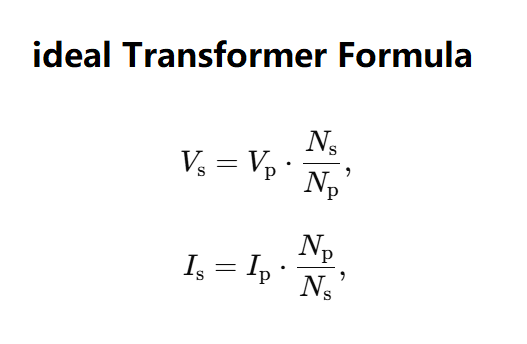 Home
Home
 Back
Back

Definition: This calculator computes the secondary voltage (\( V_s \)) or secondary current (\( I_s \)) for an ideal transformer, which transfers electrical energy between two coils (primary and secondary) with no losses, using the relationships between voltages, currents, and the number of turns.
Purpose: It is used in electrical engineering to design transformers for applications such as power distribution, voltage regulation, and impedance matching.
The calculator uses the following equations for an ideal transformer:
Where:
Steps:
Details: Ideal transformer calculations are crucial for designing transformers in power systems, ensuring proper voltage and current transformation for efficient energy transfer and impedance matching.
Tips: Ensure all inputs are positive for the number of turns and non-negative for voltages and currents. The calculator assumes an ideal transformer with no losses, which is a simplification of real-world transformers.
Examples:
Q: What is an ideal transformer?
A: An ideal transformer is a theoretical model that transfers electrical energy between two coils with no losses, following the voltage and current relationships based on the turns ratio.
Q: Why is the turns ratio important?
A: The turns ratio (\( N_s / N_p \)) determines the voltage and current transformation between the primary and secondary coils, allowing for step-up or step-down voltage conversion.
Q: How does an ideal transformer differ from a real transformer?
A: An ideal transformer assumes no losses (e.g., no resistance, leakage flux, or core losses), while real transformers have inefficiencies that affect performance.